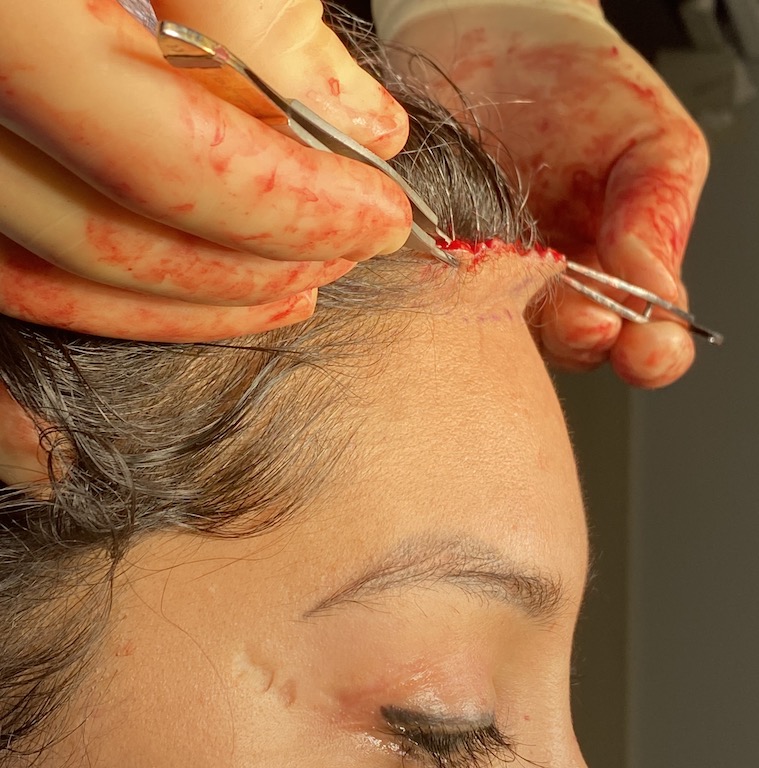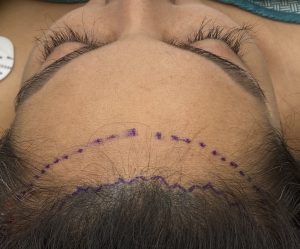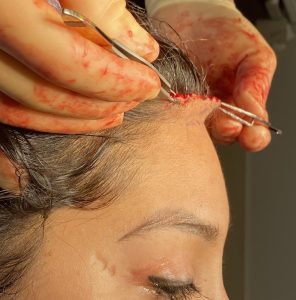Background: The size and appearance of the forehead is heavily influenced by the location of the surrounding hairline, particularly the frontal portion of it. Frontal hairlines that are high, as in patients that have a long forehead, are common aesthetic concerns. Soft tissue forehead reduction or lowering of the frontal hairline can be done by either a forward or inferior relocation of the entire hairline (frontal hairline advancement) or hair transplantation. Each method has its advantages and disadvantages for which certain hairline locations and frontal hairline patterns/densities will influence which method may be better.
But besides the vertical length of the forehead the frontal hairline also has different shapes. There are usually five basic frontal hairline shapes (straight line or rectangular, widow, bell-shaped, triangular, M-shape and round shapes. (some authors describe additional shapes as well) One of the least common of these five hairline shapes is the Bell shape.
Having the hairline very high in the center but lower and more narrow on the sides is an uncommon forehead appearance and is an interesting one for hairline advancement surgery. The greatest movement in hairline advancements occurs centrally, which optionally addresses the Bell shaped hairline, but poses a bit of dilemma on the sides since it is already more than adequately forward/low. Thus the sides of the hairline incision should head back into the hairline and not along it in a more exposed location.
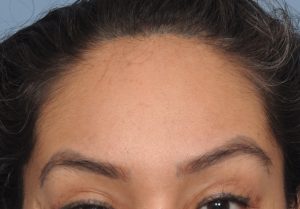
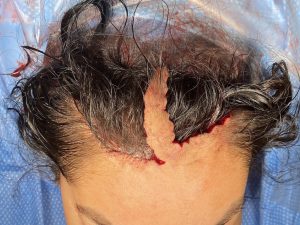
Her immediate intraoperative results show the change as would be expected.As the primary movement was centrally this works well for changing the overall pattern of the frontal hairline in the Bell- shaped forehead.
Highlights:
- A frontal hairline advancement or vertical forehead reduction procedure relies on the mobility/elasticity of the scalp for its effect.
- The central hairline always moves further forward than the side of the hairline.
- In the bell-shaped female frontal hairline the advancement is central with the goal of having more of an M-shape if possible.
Dr. Barry Eppley
Indianapolis, Indiana

